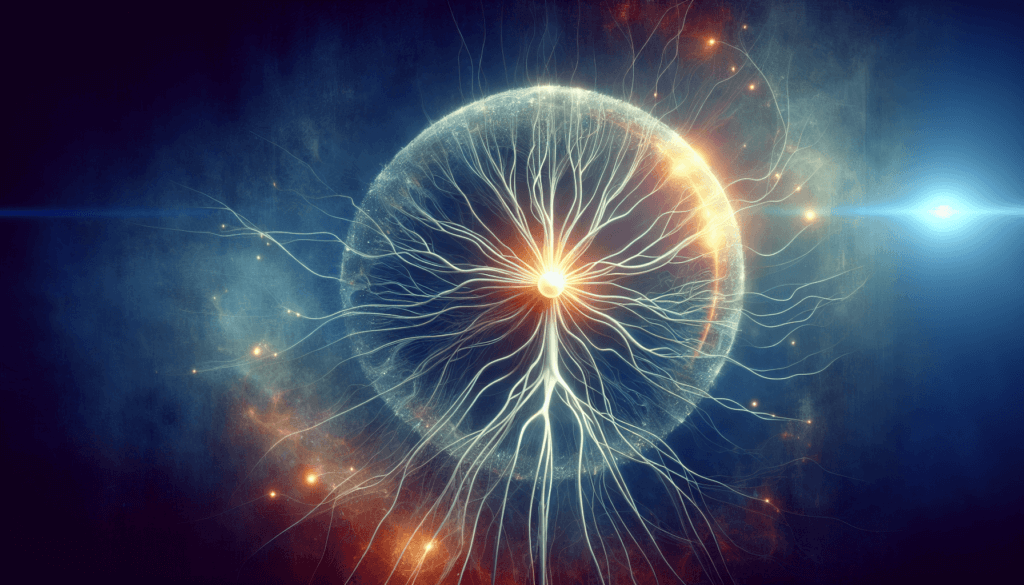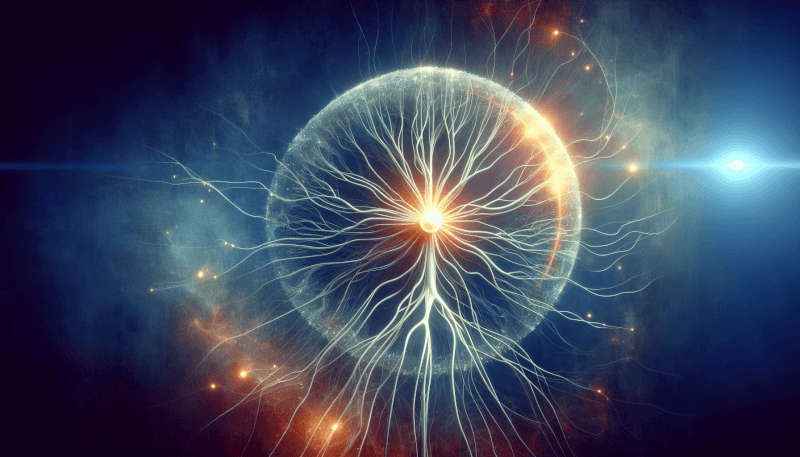So you’re dealing with nerve damage and looking for a solution that can bring you relief? Well, look no further as we bring you an exciting and innovative approach to tackle this problem – Pemf Therapy. With countless success stories and a growing body of research supporting its effectiveness, Pemf Therapy has emerged as a promising treatment option for nerve damage. By utilizing electromagnetic pulses, this therapy stimulates the damaged nerves, promoting cellular repair and reducing pain. In this article, we will explore the ins and outs of Pemf Therapy for nerve damage, giving you the knowledge you need to make an informed decision about your health. Get ready to discover a potential game-changer in nerve damage treatment!

What is Pemf Therapy
Definition of Pemf Therapy
Pemf therapy, also known as pulsed electromagnetic field therapy, is a non-invasive and drug-free treatment that uses electromagnetic fields to stimulate the body’s natural healing process. It involves the use of specific frequencies and intensities of electromagnetic fields to target damaged or dysfunctional cells and tissues in the body, promoting repair and regeneration. Pemf therapy has been widely used in the medical field to treat various conditions, including nerve damage.
How Pemf Therapy Works
Pemf therapy works by delivering electromagnetic pulses to the body’s tissues and cells. These pulses generate microcurrents that penetrate deep into the affected area, stimulating cellular activities and promoting the release of natural healing substances. The electromagnetic fields emitted by the therapy help to improve blood circulation, increase oxygenation, and enhance nutrient delivery to the damaged nerves, facilitating the regeneration process. Additionally, Pemf therapy also helps to reduce pain and inflammation associated with nerve damage, providing relief to individuals suffering from this condition.
Causes and Symptoms of Nerve Damage
Common Causes of Nerve Damage
Nerve damage, also known as neuropathy, can have various causes. Some common causes include physical injury, such as accidents or trauma, repetitive motion, certain infections, autoimmune diseases, nutritional deficiencies, and chronic illnesses like diabetes. Exposure to toxins, including certain medications or chemicals, can also lead to nerve damage. It is crucial to identify the underlying cause of nerve damage in order to determine the most effective treatment approach.
Symptoms of Nerve Damage
The symptoms of nerve damage can vary depending on the type and extent of the damage. Some common symptoms include pain, numbness or tingling sensation, weakness, muscle cramps, sensitivity to touch or temperature changes, decreased coordination, and loss of reflexes. Individuals with nerve damage may also experience difficulty in performing everyday tasks and may suffer from sleep disturbances due to the discomfort caused by the condition.
Understanding Nerve Regeneration
Process of Nerve Regeneration
Nerve regeneration refers to the natural healing process in which damaged nerves repair and restore their normal function. When a nerve is damaged, specialized cells called Schwann cells play a crucial role in the regeneration process. These cells form a pathway for new nerve growth and produce necessary substances to support nerve repair. The damaged nerve fibers send out signals to attract these Schwann cells, which then help facilitate the growth of new nerve fibers. Over time, the damaged nerve may gradually regenerate, leading to improved function and alleviation of symptoms.
Factors Affecting Nerve Regeneration
Several factors can influence the process of nerve regeneration. Age, overall health, and the extent of the nerve damage are important considerations. Younger individuals tend to have a higher capacity for nerve regeneration compared to older individuals. Good overall health, including a balanced diet, regular exercise, and proper rest, can also support the regeneration process. Additionally, factors such as the severity of the nerve damage, the presence of any underlying medical conditions, and whether prompt treatment and rehabilitative measures are provided can impact the success of nerve regeneration.
Introduction to Pemf Therapy for Nerve Damage
Overview of Pemf Therapy
Pemf therapy has gained recognition as a promising treatment option for nerve damage due to its ability to stimulate the body’s natural healing mechanisms. Unlike traditional treatment approaches that focus on managing symptoms, Pemf therapy directly targets the underlying cause of nerve damage by promoting regeneration and repair at the cellular level. This therapy is non-invasive, painless, and does not involve any medication, making it a safe and effective choice for individuals seeking alternative treatments for nerve damage.
Why Pemf Therapy is Effective for Nerve Damage
Pemf therapy has shown effectiveness in treating nerve damage by addressing multiple aspects of the healing process. Firstly, the therapy helps to decrease pain associated with nerve damage through its analgesic effects. By reducing pain, individuals undergoing Pemf therapy can better engage in rehabilitative exercises and activities, promoting faster recovery. Additionally, Pemf therapy improves blood circulation and oxygenation, which are crucial for delivering essential nutrients and removing waste products from the damaged nerves. This enhanced blood flow supports the healing and regeneration process, allowing the nerves to repair and regain their normal function.

Benefits of Pemf Therapy for Nerve Damage
Pain Reduction
One of the significant benefits of Pemf therapy for nerve damage is its ability to reduce pain. Chronic pain caused by nerve damage can be debilitating and impact an individual’s quality of life. Pemf therapy works by modulating nerve signaling, interrupting pain pathways, and promoting the release of endorphins, which are the body’s natural pain-relieving substances. The therapy also helps to decrease inflammation in the damaged nerves, providing relief from pain and discomfort.
Improved Blood Circulation
Pemf therapy improves blood circulation, which is vital for the healing process. The electromagnetic fields emitted during Pemf therapy stimulate the dilation of blood vessels, allowing for increased blood flow to the damaged nerves. This enhanced circulation helps deliver oxygen, nutrients, and immune cells to the affected area, supporting the regeneration and repair of the nerves. Improved blood circulation also aids in the removal of waste products and toxins, reducing inflammation and promoting overall healing.
Enhanced Nerve Healing
By stimulating cellular activities and promoting the release of growth factors, Pemf therapy accelerates the healing of damaged nerves. The therapy helps to activate the Schwann cells responsible for nerve repair, facilitating the growth of new nerve fibers. This improved nerve healing leads to a restoration of nerve function, alleviation of symptoms, and improved quality of life for individuals suffering from nerve damage.
Pemf Devices Used for Nerve Damage
Different Types of Pemf Devices
There are various types of Pemf devices used for nerve damage, each offering unique features and benefits. Some common types include Pemf mats, Pemf mats with targeted applicators, Pemf therapy mats with built-in PEMF coils, and handheld Pemf devices. Pemf mats provide a larger treatment area and are suitable for individuals seeking whole-body therapy. Pemf mats with targeted applicators allow for more precise application on specific areas affected by nerve damage. Handheld Pemf devices offer portability and convenience, making them ideal for targeted therapy on smaller areas.
Choosing the Right Pemf Device for Nerve Damage
When choosing a Pemf device for nerve damage, it is essential to consider factors such as the severity of the nerve damage, the specific symptoms experienced, and the desired treatment outcomes. Consulting with a medical professional or a Pemf therapy specialist can help determine the most suitable device for individual needs. It is crucial to select a device that offers the appropriate frequency and intensity settings to effectively target the damaged nerves and promote healing.
Safety Considerations for Pemf Therapy
Potential Side Effects
Pemf therapy is generally considered safe, with minimal side effects. However, some individuals may experience mild discomfort, temporary skin redness, or slight pain during or after the therapy session. These side effects are usually temporary and subside quickly. It is important to follow the manufacturer’s instructions and use the device as recommended to minimize the risk of adverse effects. If any unusual or persistent side effects occur, it is advisable to consult a healthcare professional.
Precautions to Take
While Pemf therapy is generally safe, there are certain precautions to consider when using a Pemf device for nerve damage. Individuals with implanted medical devices, such as pacemakers or insulin pumps, should consult with their healthcare provider before undergoing Pemf therapy. Pregnant women and individuals with specific medical conditions, such as epilepsy or active cancer, should also seek medical advice before starting Pemf treatment. It is important to follow the recommended treatment duration, frequency, and intensity levels to ensure safe and effective therapy.
Case Studies and Research on Pemf Therapy for Nerve Damage
Research Findings on Pemf Therapy
Numerous studies and research trials have explored the effectiveness of Pemf therapy for nerve damage. Research findings indicate that Pemf therapy can significantly reduce pain and improve nerve function in individuals with various types of nerve damage, including diabetic neuropathy, carpal tunnel syndrome, and peripheral nerve injuries. Studies have also demonstrated that Pemf therapy can enhance the healing process, support nerve regeneration, and reduce inflammation in damaged nerves.
Success Stories of Pemf Therapy for Nerve Damage
There are several success stories documenting the positive outcomes of Pemf therapy for nerve damage. Many individuals have reported reduced pain, improved sensation and mobility, and enhanced quality of life after undergoing Pemf treatment. These success stories highlight the potential of Pemf therapy as an effective and safe alternative treatment for nerve damage.
How to Use Pemf Therapy for Nerve Damage
Consultation with a Medical Professional
Before starting Pemf therapy for nerve damage, it is crucial to consult with a medical professional who specializes in this field. A healthcare provider can assess the severity of the nerve damage, review medical history, and recommend a suitable treatment plan. They can also guide individuals on the proper use and application of Pemf devices, ensuring optimal results and safety.
Recommended Treatment Duration and Frequency
The recommended treatment duration and frequency of Pemf therapy for nerve damage may vary depending on individual circumstances and the severity of the condition. It is typically recommended to start with shorter sessions, gradually increasing the treatment duration over time. The frequency of Pemf therapy sessions may range from daily treatments to a few sessions per week. The healthcare provider will determine the appropriate treatment plan based on individual needs and responses to the therapy.
Combining Pemf Therapy with Other Treatments
Complementary Therapies for Nerve Damage
In addition to Pemf therapy, there are several complementary therapies that can be used to enhance the healing process for nerve damage. Physical therapy, occupational therapy, and chiropractic care can help improve strength, flexibility, and coordination. Acupuncture, massage therapy, and transcutaneous electrical nerve stimulation (TENS) may also provide additional pain relief and support nerve regeneration.
Integration of Pemf Therapy with Conventional Treatments
Pemf therapy can be integrated with conventional treatments for nerve damage to enhance overall outcomes. It can be used alongside medications prescribed for pain management or to address specific underlying conditions. The combination of Pemf therapy with conventional treatments can provide a holistic approach to nerve damage treatment, targeting both symptom relief and the regeneration of damaged nerves.
In conclusion, Pemf therapy offers a promising treatment option for individuals suffering from nerve damage. With its ability to reduce pain, improve blood circulation, and enhance nerve healing, Pemf therapy can significantly improve the quality of life for those affected by this condition. By choosing the right Pemf device, following safety precautions, and seeking guidance from healthcare professionals, individuals can effectively incorporate Pemf therapy into their treatment plans, supporting nerve regeneration and achieving positive outcomes.


